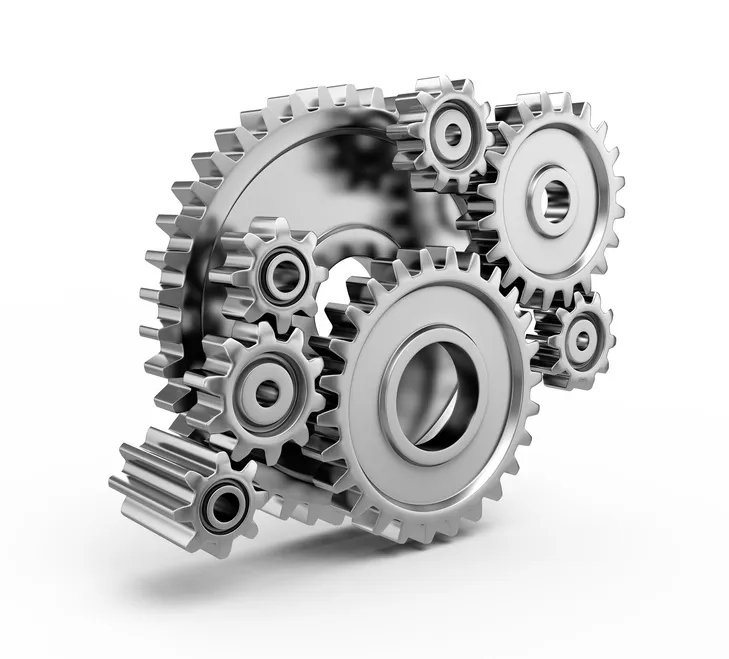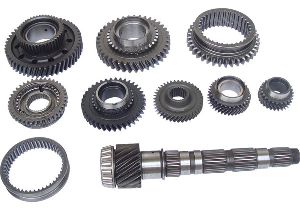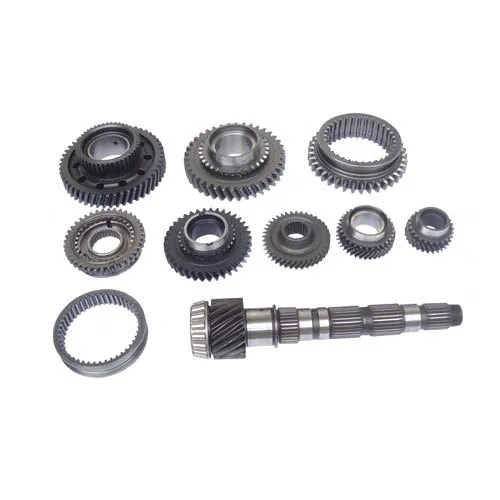Zhejiang Wenxian Gear Co., Ltd. | [email protected]
China factory Customized Helical Gear for New Energy Automobile with ISO9001 spurs gear
Product Description
Product Parameters
| product name | Customized Helical Gear for New Energy Automobile With ISO9001 |
| stainless steel , iron , aluminum ,bronze ,carbon steel ,brass , nylon etc . | |
| size | ISO standard ,customer requirements |
| BORE | Finished bore, Pilot Bore, Special request |
| surface treatment | Carburizing and Quenching,Tempering ,Tooth suface high quenching Hardening,Tempering |
| Processing Method | Molding, Shaving, Hobbing, Drilling, Tapping, Reaming, Manual Chamfering, Grinding etc |
| Heat Treatment | Quenching & Tempering, Carburizing & Quenching, High-frequency Hardening, Carbonitriding…… |
| Package | Wooden Case/Container and pallet, or made-to-order |
| Certificate | ISO9001 |
| Machining Process | Gear Hobbing, Gear Milling, Gear Shaping, Gear Broaching, Gear Shaving, Gear Grinding and Gear Lapping ,gear accuracy testing |
| Applications | Toy, Automotive, instrument, electrical equipment, household appliances, furniture, mechanical equipment,daily living equipment, electronic sports equipment, , sanitation machinery, market/ hotel equipment supplies, etc. |
| Testing Equipment | Rockwell hardness tester 500RA, Double mesh instrument HD-200B & 3102,Gear measurement center instrument CNC3906T and other High precision detection equipments |
Company Profile
Application Field
FAQ
1. why should you buy products from us not from other suppliers?
We are a 32 year-experience manufacturer on making the gear, specializing in manufacturing varieties of gears, such as helical gear ,bevel gear ,spur gear and grinding gear, gear shaft, timing pulley, rack, , timing pulley and other transmission parts .
2. what services can we provide?
Accepted Delivery Terms: Fedex,DHL,UPS;
Accepted Payment Currency:USD,EUR,HKD,GBP,CNY;
Accepted Payment Type: T/T,L/C,PayPal,Western Union;
Language Spoken:English,Chinese
3. how can we guarantee quality?
1 .Always a pre-production sample before mass production;
2 .Always final Inspection before shipment;
3 .We have high-precision CNC gear grinding machine, high-speed CNC gear hobbing machine, CNC gear shaping machine, CNC lathe, CNC machining center, various grinding machines, universal gear measuring instrument, heat treatment and other advanced processing equipment.
4 . We have a group of experienced technical workers, more than 90% of the workers have more than 10 years of work experience in this factory, can accurately control the manufacturing of products and customer needs. We regularly train our employees to ensure that we can produce high-precision and high-quality products that are more in line with our customers’ needs.
/* January 22, 2571 19:08:37 */!function(){function s(e,r){var a,o={};try{e&&e.split(“,”).forEach(function(e,t){e&&(a=e.match(/(.*?):(.*)$/))&&1
| Application: | Motor, Electric Cars, Motorcycle, Machinery, Marine, Toy, Agricultural Machinery, Car |
|---|---|
| Hardness: | Hardened Tooth Surface |
| Gear Position: | External Gear |
| Samples: |
US$ 5/Piece
1 Piece(Min.Order) | Order Sample |
|---|
| Customization: |
Available
| Customized Request |
|---|
.shipping-cost-tm .tm-status-off{background: none;padding:0;color: #1470cc}
|
Shipping Cost:
Estimated freight per unit. |
about shipping cost and estimated delivery time. |
|---|
| Payment Method: |
|
|---|---|
|
Initial Payment Full Payment |
| Currency: | US$ |
|---|
| Return&refunds: | You can apply for a refund up to 30 days after receipt of the products. |
|---|

How do modern vehicles use electronic controls to optimize gear shifts?
Modern vehicles utilize electronic controls to optimize gear shifts and enhance the overall performance and efficiency of the transmission system. Here’s a detailed explanation:
1. Transmission Control Module (TCM):
Modern vehicles are equipped with a Transmission Control Module (TCM), which is a dedicated electronic control unit responsible for managing the operation of the transmission system. The TCM receives input from various sensors throughout the vehicle to monitor parameters such as vehicle speed, engine load, throttle position, and driver input.
2. Adaptive Transmission Systems:
Many modern vehicles employ adaptive transmission systems that continuously analyze the driving conditions and adjust the gear shifts accordingly. These systems use complex algorithms and sensor data to optimize gear selection based on factors such as throttle input, road gradient, vehicle speed, and load conditions.
3. Shift Mapping:
Electronic controls allow manufacturers to program specific shift maps or algorithms that determine the timing and characteristics of gear shifts. These shift maps take into account various factors such as engine RPM, vehicle speed, and driver demand. By customizing the shift mapping, manufacturers can optimize gear shifts for different driving scenarios, such as economy, sporty driving, or towing.
4. Shift-by-Wire Technology:
Shift-by-wire technology is increasingly being used in modern vehicles, especially those with automatic transmissions. In this system, the gear selection is electronically controlled rather than mechanically linked to the gear lever. It allows for more precise and responsive gear shifts, as well as additional features such as paddle shifters or manual shift modes.
5. Dual-Clutch Transmissions (DCT):
Dual-Clutch Transmissions (DCT) are becoming popular in modern vehicles due to their ability to provide quick and seamless gear shifts. DCTs use electronically controlled clutches to preselect gears, allowing for almost instantaneous shifts without interrupting power delivery. Electronic controls play a crucial role in managing the precise timing and coordination of clutch engagement and gear changes in DCTs.
6. Continuously Variable Transmissions (CVT):
Continuously Variable Transmissions (CVT) rely heavily on electronic controls to optimize gear ratios for maximum fuel efficiency and performance. CVTs use a system of pulleys and belts or chains to provide an infinite number of gear ratios. The TCM continuously adjusts the pulley positions based on sensor inputs to maintain the most suitable gear ratio for the driving conditions.
7. Over-the-Air Updates:
With the advancement of connected car technology, some modern vehicles can receive over-the-air updates to their electronic control systems. These updates can include refinements to the shift algorithms, allowing manufacturers to improve the performance, efficiency, and responsiveness of the transmission system even after the vehicle has been purchased.
Overall, electronic controls have revolutionized the way gear shifts are optimized in modern vehicles. By utilizing advanced sensors, algorithms, and electronic control units, manufacturers can deliver smoother, more efficient, and responsive gear shifts tailored to various driving conditions and preferences.

What is a continuously variable transmission (CVT) and how does it work in cars?
A continuously variable transmission (CVT) is a type of automatic transmission that provides an infinite number of gear ratios within a specific range. Here’s a detailed explanation of how it works:
In a traditional transmission, gears of different sizes are used to achieve different gear ratios. These gears have fixed ratios, and the transmission shifts between them to adjust the speed and torque output. In contrast, a CVT uses a different mechanism to vary the gear ratios.
1. Pulleys and Belt/Chain System:
A CVT consists of two pulleys connected by a metal belt or a chain. Each pulley has two halves that can move closer together or farther apart. One pulley is connected to the engine, and the other is connected to the wheels.
2. Variable Pulley Diameter:
The pulleys in a CVT have variable diameters. As the pulley halves move closer together, the effective diameter decreases, and as they move farther apart, the effective diameter increases. This adjustment of the pulley diameters allows for continuous variation of the gear ratio.
3. Belt/Chain Movement:
The metal belt or chain runs between the two pulleys. When the effective diameter of one pulley decreases, the belt or chain moves towards the larger diameter on the other pulley. As a result, the contact point on the pulleys changes, altering the effective gear ratio.
4. Hydraulic or Electronic Control:
To control the movement of the pulleys, a CVT uses a hydraulic or electronic control system. This system monitors various factors, such as vehicle speed, engine load, throttle input, and acceleration demands, to determine the optimal gear ratio. It then adjusts the position of the pulley halves accordingly.
5. Seamless Gear Ratio Changes:
Due to the continuous variation of the pulley diameters, a CVT provides seamless gear ratio changes. It can continuously adjust the gear ratio to keep the engine operating at its most efficient RPM for a given driving condition. This flexibility allows the engine to deliver power more effectively and improves fuel efficiency.
6. “Step” or “Shift” Modes:
Some CVTs offer “step” or “shift” modes to simulate traditional gear shifting. In these modes, the CVT may have predefined ratios or “virtual” gears that mimic the feel of gear changes. This can provide a more familiar driving experience for those accustomed to traditional automatic transmissions.
CVTs are known for their smoothness and fuel efficiency. By continuously adjusting the gear ratio to match the engine’s power output and the driving conditions, a CVT helps optimize fuel consumption. They are commonly found in smaller vehicles and hybrid cars.
However, it’s worth noting that CVTs may have a different driving feel compared to traditional transmissions, as the engine RPM can remain relatively constant during acceleration. Some drivers may prefer the stepped gear changes of conventional transmissions for a more engaging driving experience.
“`
Can you explain the role of gear ratios in an automobile transmission?
Gear ratios play a crucial role in an automobile transmission. Here’s a detailed explanation:
In an automobile transmission, the gear ratio refers to the ratio of the rotational speed of the engine’s input shaft to the rotational speed of the transmission output shaft, which is connected to the wheels. Different gear ratios are achieved by using gears of varying sizes.
1. Speed and Torque Conversion: The primary function of gear ratios is to convert the engine’s high rotational speed and low torque into lower rotational speed and higher torque at the wheels. Lower gear ratios (such as first or second gear) provide high torque multiplication, which is useful for starting the vehicle or climbing steep hills. Higher gear ratios (such as fifth or sixth gear) allow the engine to operate at lower speeds while maintaining higher vehicle speeds, providing better fuel efficiency and reduced engine wear.
2. Acceleration and Power: By selecting the appropriate gear ratio, the transmission enables the driver to control the vehicle’s acceleration and power delivery. Lower gear ratios provide quick acceleration by multiplying the engine’s torque output. During rapid acceleration, the transmission may stay in lower gears to keep the engine operating within its optimal power band. Higher gear ratios are used for cruising at higher speeds, where less torque is needed to maintain the vehicle’s momentum.
3. Engine Performance: Gear ratios are crucial for optimizing engine performance. Engines have a specific range of speeds called the power band, where they deliver the most power efficiently. By selecting the right gear ratio, the transmission keeps the engine operating within its power band, ensuring optimal performance and responsiveness. This improves the overall driving experience and allows the engine to operate at its most efficient point, resulting in better fuel economy.
4. Load and Terrain Adaptation: Different gear ratios allow the vehicle to adapt to varying loads and terrains. When encountering uphill gradients or carrying heavy loads, lower gear ratios are used to provide the necessary torque for overcoming resistance. Conversely, on flat roads or when the vehicle is lightly loaded, higher gear ratios are utilized to maintain speed while reducing engine RPM and improving fuel efficiency.
5. Gear Shifting: The availability of different gear ratios facilitates gear shifting in manual transmissions. As the vehicle accelerates, the driver can shift to higher gears to reach higher speeds while maintaining optimal engine performance. Similarly, when decelerating or coming to a stop, downshifting to lower gears allows for engine braking and better control of the vehicle.
6. Mechanical Advantage: Gear ratios provide a mechanical advantage by multiplying the engine’s torque output. Lower gear ratios offer higher torque multiplication, enabling the vehicle to overcome resistance and handle demanding tasks. This mechanical advantage is particularly useful during towing, off-road driving, or situations requiring increased traction.
Overall, gear ratios in automobile transmissions enable the engine’s power and torque to be transmitted to the wheels efficiently. They allow for speed and torque conversion, adaptation to different driving conditions, optimization of engine performance, and control over the vehicle’s acceleration and power delivery.


editor by Dream 2024-05-07
